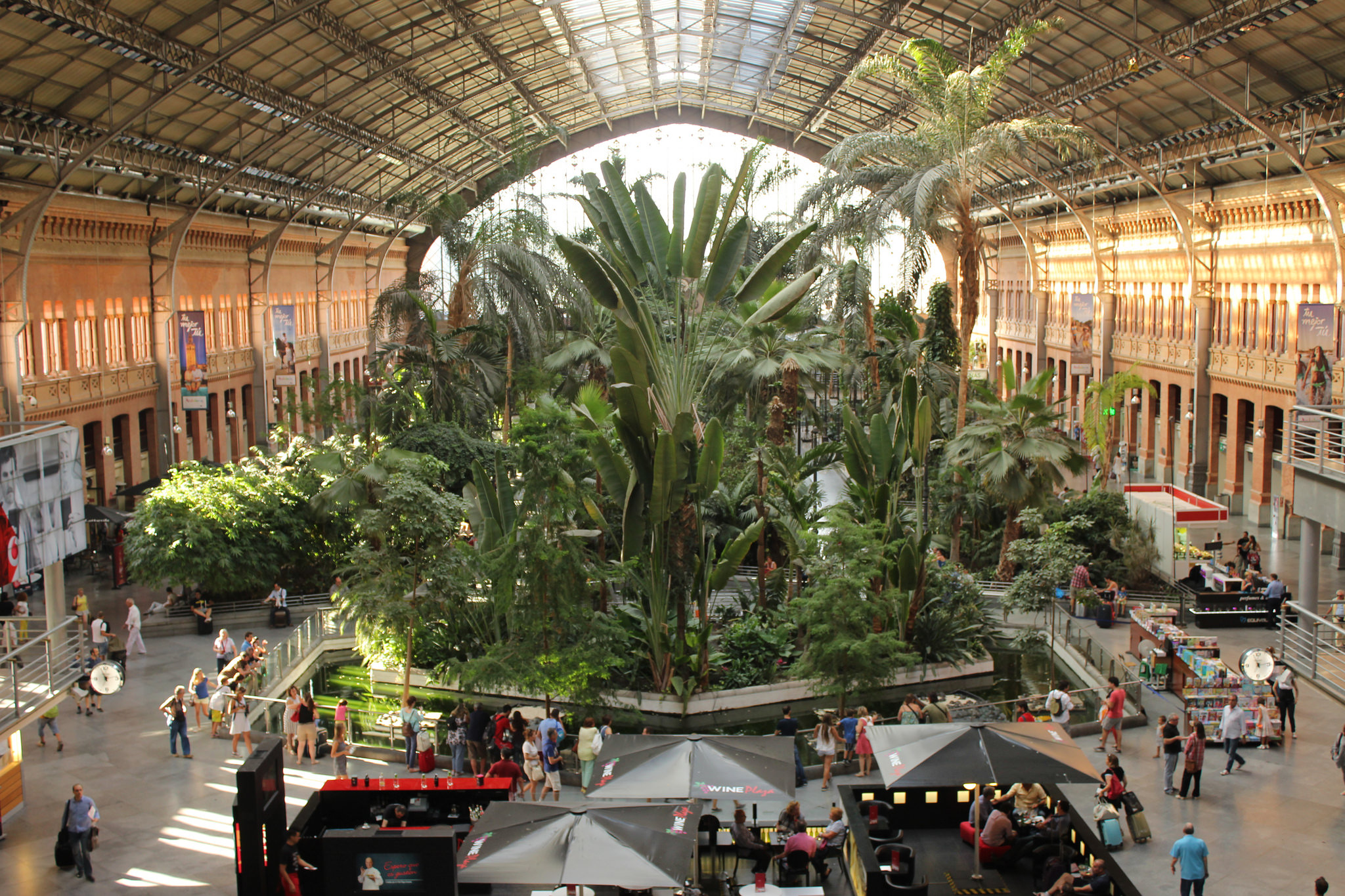If an upcoming vacation is going to have you traveling within Madrid and throughout the various cities and towns of beautiful Spain, you will no doubt be visiting the Estación de Atocha. The Estación de Atocha is the largest and most impressive railway station in Madrid and the primary station serving the city’s commuter trains (Cercanias), intercity and regional trains from the south and the AVE high speed trains from Barcelona (Catalonia), Saragosse (Aragon), Seville (Andalusia) and Valencia (Levante Region). These train services are operated by Renfe, the Spanish National Rail Company. Below we have provided a synopsis of the Estación de Atocha, including a brief overview of the facility and its history, including the tragic bombings of 2004.
Estación de Atocha: Description
The Estación de Atocha is located in the district of Arganzuela, in the Atocha neighborhood, hence the name of the station. Its original façade is just opposite the Plaza del Emperador Carlos V, where an assortment of Madrid’s most highly-traveled streets converge, including the Paseo del Prado, Calle de Atocha, Avenida de la Ciudad de Barcelona and Calle de Mendez Alvarado, among others.
The Estación de Atocha is in reality a railway complex, formed by the Madrid Atocha Cercanias and Madrid Puerta de Atocha station of the Spanish national railways and the Atocha Renfe station of the Madrid underground.
Estación de Atocha: History
The station now known as the Estación de Atocha opened and was inaugurated on February 9, 1851. Its original name was Estación de Mediodía, and today there is an area in the Arganzuela district called Atocha-Mediodia, which means “south” in old Spanish. During the second half of the 1800s the station was heavily damaged by fire and was ultimately destroyed. It was rebuilt and reopened in 1892 using the design of architect Alberto de Palacio Elissagne, who used a “wrought iron renewal style” for the building’s construction. Architect Gustave Eiffel also collaborated in the project, as did Engineer Henry Saint James. With the new construction of the Estación de Atocha, the train platforms were partly covered by a roof in the shape of an upturned hull—a roof with a height of approximately 27 meters and a length of 157 meters. The steel and glass roof spreads between two brick flanking buildings.
Over the years the Estación de Atocha has undergone much remodeling and expansion. In 1985, for example, the interior of the facility was redesigned by Rafael Moneo, while in 1992 the original building was taken out of service as a train terminal and was instead converted into a concourse with a variety of shops, cafes and even a nightclub. The concourse is also home to a large covered tropical garden, one with almost 4,000 square meters of total land area.Atocha train station tropical garden photo credit
The name Atocha has for decades now been attached to the station because of the nearby basilica dedicated to Our Lady of Atocha.
On March 11, 2004, tragedy struck the Estación de Atocha. As jam-packed commuter trains were arriving at the station, many of them were bombed in a series of coordinated attacks, ultimately killing 191 people and wounding another 1,800. The Spanish Judiciary investigated this horrendous and cowardly crime and determined the bombing attacks were led by a terrorist cell.
Since June 10, 2004—the day of its dedication—the Estación de Atocha has featured a very minimalistic and somber memorial commemorating those who were killed and wounded in the attacks. The memorial includes a virtual shrine and a place where visitors can leave a message and hand silhouette through special-purpose consoles. A larger memorial can be found in the Parque de Retiro (Retiro Park), which is very near the Atocha Neighborhood.



